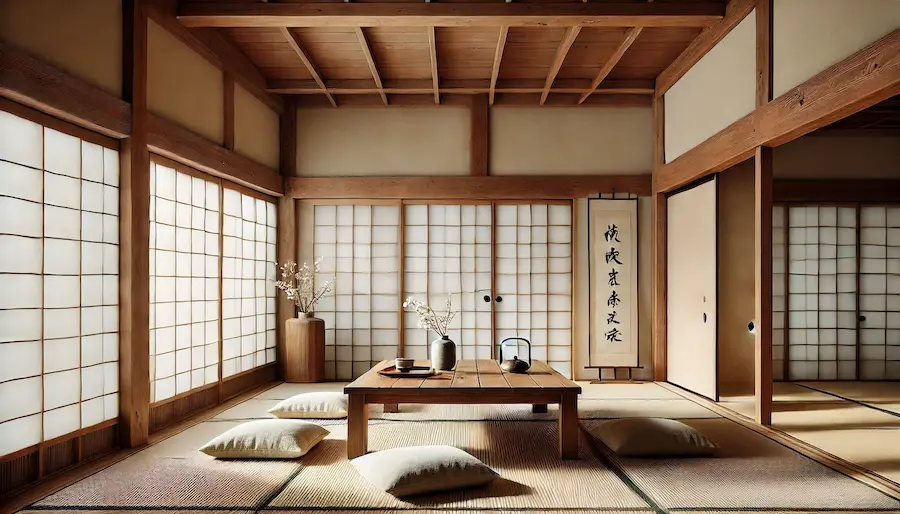Traditional Japanese living rooms, known as washitsu, embody simplicity, natural materials, and a deep connection to nature.
History and Origins of Traditional Japanese Living Rooms
The washitsu has its roots in the Heian period (794–1185), evolving through the Muromachi period (1336–1573) with the development of shoin-zukuri architecture. This style emphasized tatami flooring, sliding shoji doors, and minimalistic design, reflecting Zen Buddhist principles of simplicity and harmony.
Key Features of Traditional Japanese Living Rooms
- Tatami Flooring: Constructed from rice straw, tatami mats provide a soft, natural surface and regulate room dimensions.
- Shoji Screens: Translucent paper screens on wooden frames that allow diffused light, creating a serene ambiance.
- Tokonoma Alcove: A recessed space for displaying art, calligraphy, or flower arrangements, serving as the room’s focal point.
- Low Furniture: Items like chabudai (low tables) and zabuton (floor cushions) encourage floor-level seating, fostering intimacy and connection.
- Natural Materials: Extensive use of wood, bamboo, and paper reflects a harmonious relationship with nature.
Applications in Modern Living Room Design
Incorporating traditional Japanese elements into contemporary living rooms can create a tranquil and minimalist environment. Consider the following applications:
- Open Space: Maintain an uncluttered layout to promote a sense of calm and spaciousness.
- Natural Light: Maximize natural illumination through large windows or shoji screens to enhance serenity.
- Indoor-Outdoor Connection: Integrate elements like indoor plants or a view of a garden to strengthen the bond with nature.
- Neutral Color Palette: Utilize earthy tones and natural colors to evoke a peaceful atmosphere.
Considerations When Designing a Traditional Japanese Living Room
- Authenticity: Incorporate genuine materials and traditional craftsmanship to honor Japanese heritage.
- Functionality: Ensure the space is practical, with multi-purpose areas and adaptable furniture.
- Cultural Sensitivity: Respect the cultural significance of design elements, such as the tokonoma’s role in displaying art.
Conclusion
A traditional Japanese living room offers a serene and harmonious space, emphasizing natural materials, simplicity, and a deep connection to nature. By integrating these elements, one can create a tranquil environment that reflects the timeless beauty of Japanese design.
